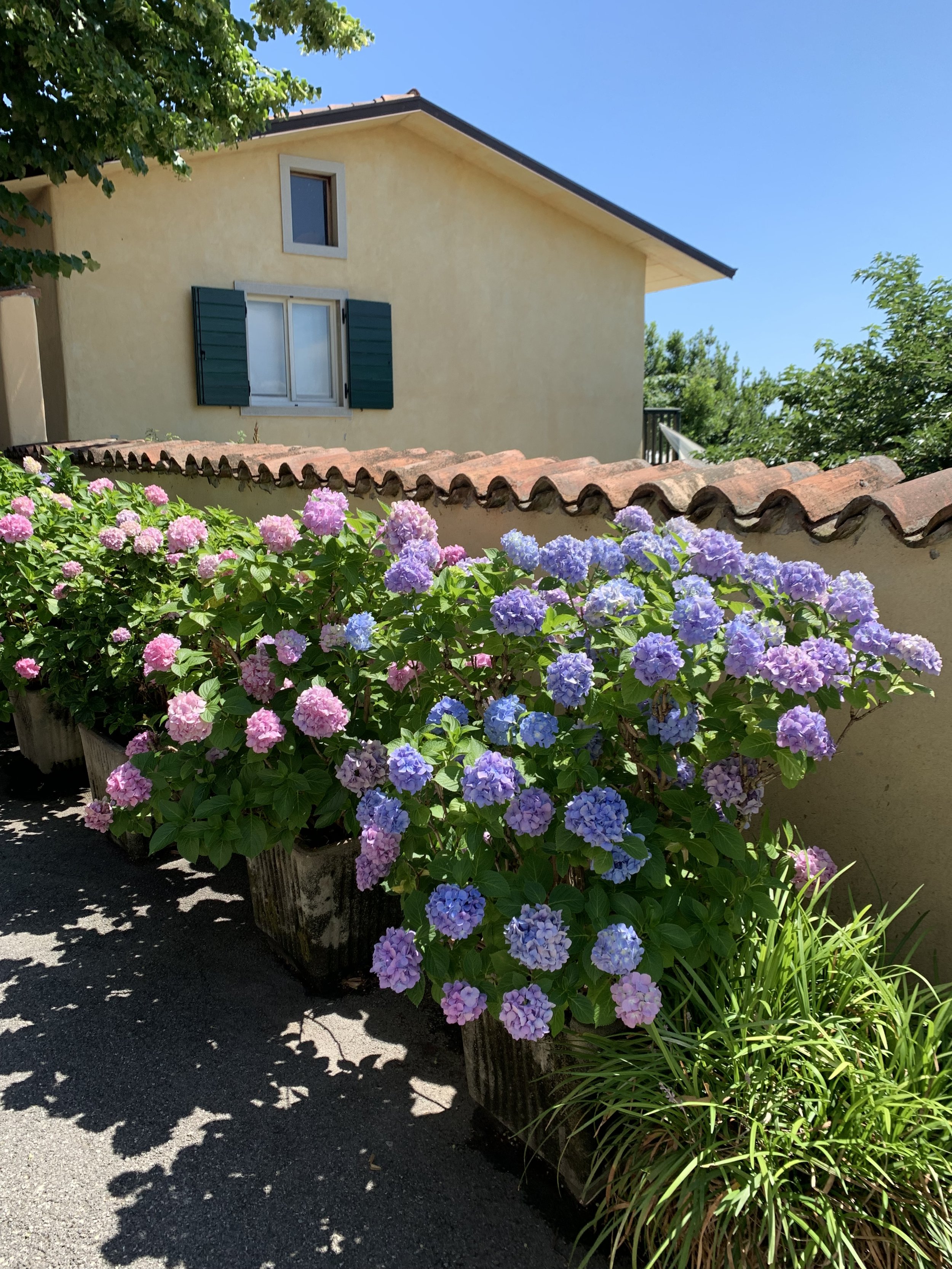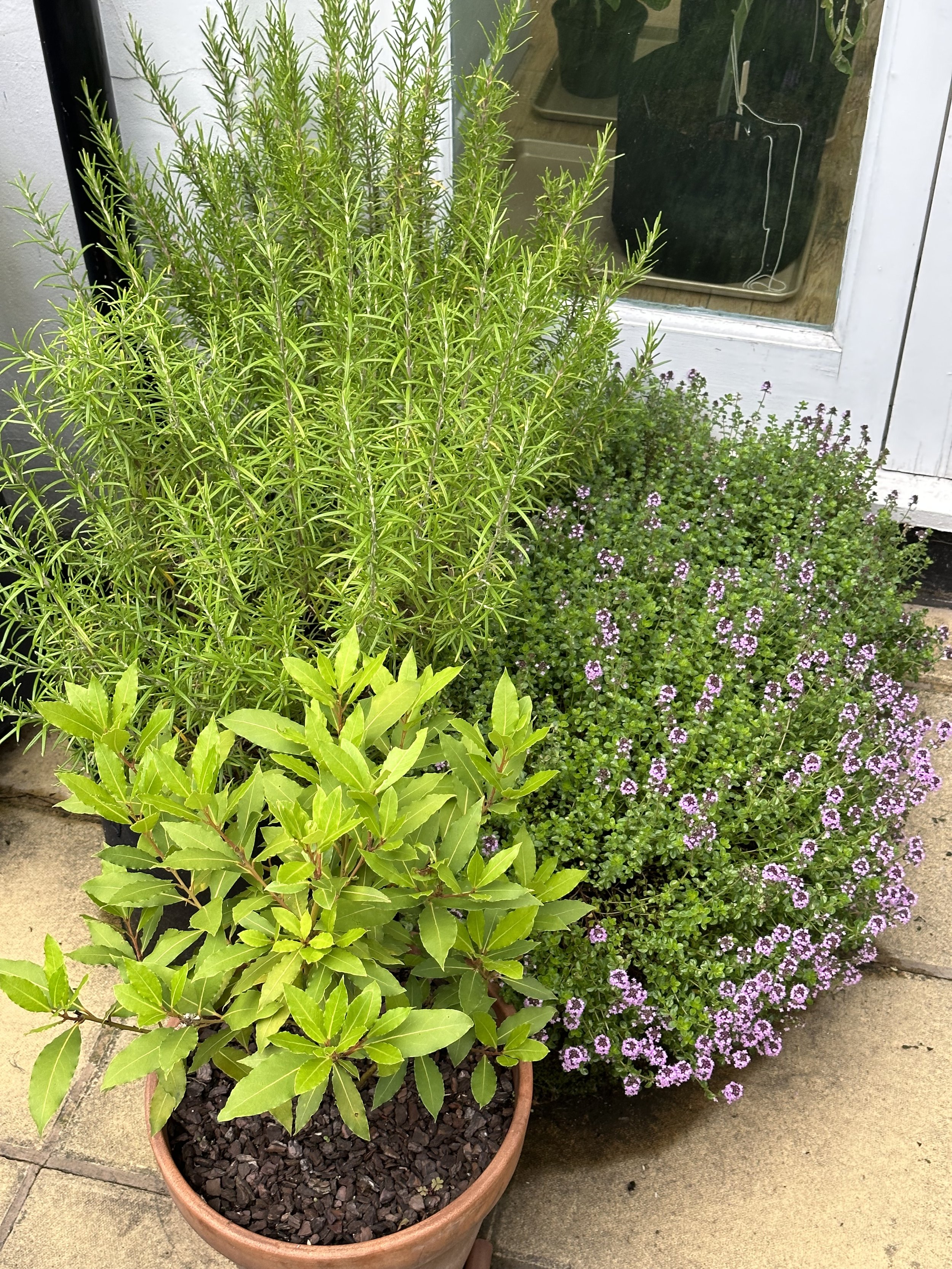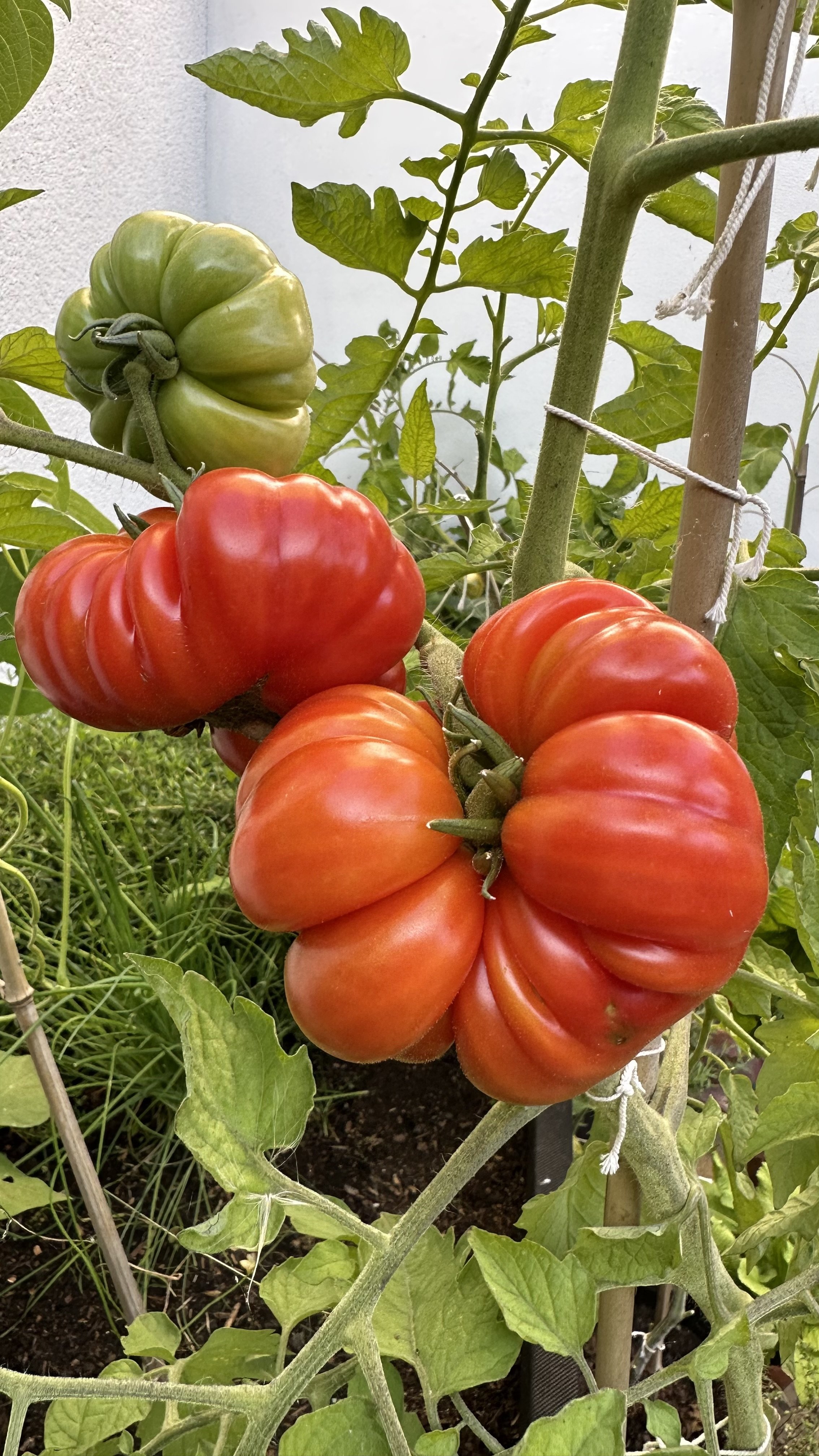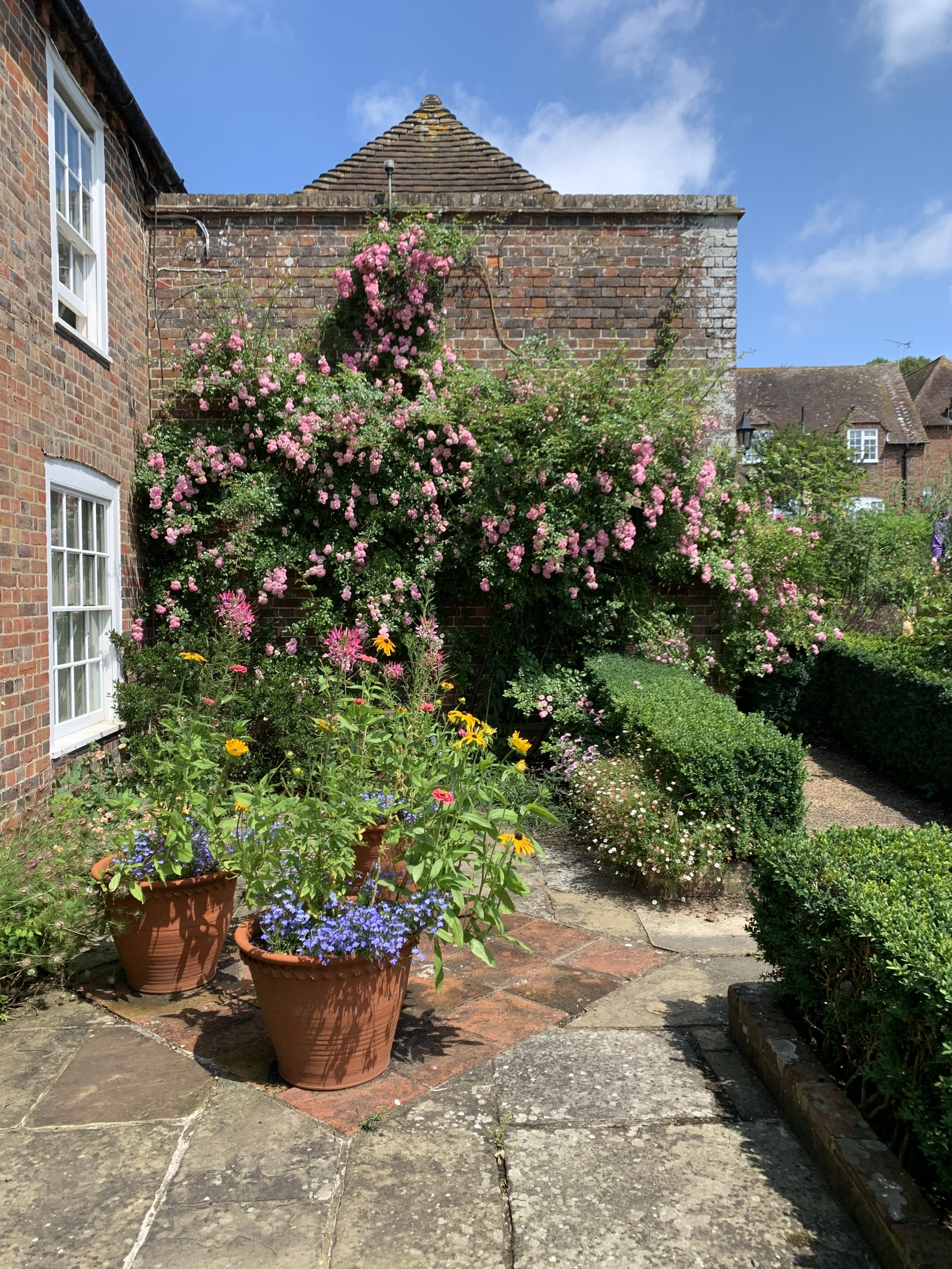The Best Plants for Your South West Facing Garden
This website is reader-supported - thank you! This post may contain affiliate links. As an Amazon Associate, I earn from qualifying purchases at no extra cost to you.
If you're lucky enough to have a south west facing garden, you're sitting on a goldmine of gardening potential.
This special orientation captures the warm afternoon and evening sun, creating an ideal setting for a wide array of plants to flourish.
In this post, I'll unveil the secrets to maximizing the unique advantages of your south west facing outdoor space.
From selecting plants that thrive in these conditions to providing care tips that ensure their growth, I’m here to help you transform your garden into a vibrant, green retreat.
To learn more about gardening by your garden’s orientation, check out my guides:
Understanding Your Garden's Orientation
Before we delve into the realm of color palettes and textures, let's start with the basics: understanding the orientation of our garden.
It's like knowing the canvas before we paint.
The Basics of Garden Orientation
Your garden's orientation, or the direction it faces, plays a pivotal role in everything from plant selection to layout design.
It determines how much sunlight your garden receives throughout the day, which in turn influences the microclimate of your little patch of earth.
South Facing:
Gardens with a southern exposure receive the most sunlight, especially in the Northern Hemisphere.
They are bathed in light for the majority of the day.
Learn more about south facing gardens with my guide: The Best Plants for a South Facing Garden.
East Facing:
These gardens catch the morning sun but are shaded in the afternoon.
They offer a gentle environment for plants that prefer cooler conditions.
Learn more about east facing gardens with my guide: The Best Plants for an East Facing Garden.
West Facing:
Similar to our focus, west facing gardens enjoy the afternoon and evening sun, creating a warm and vibrant setting as the day progresses.
Learn more about west facing gardens with my guide: The Best Plants for a West Facing Garden.
North Facing:
The most shaded of all, north facing gardens receive limited direct sunlight, making them suitable for shade-tolerant plants.
Learn more about north facing gardens with my guide: The Best Plants for Your North Facing Garden.
The Charm of South West Facing Gardens
A garden with a south west facing orientation is truly special.
It strikes a beautiful balance, basking in the golden glow of the afternoon and evening sun.
This extended exposure to sunlight makes it an ideal environment for a variety of plants—those that crave the sun's embrace as much as we do.
Sunlight and Shadow Play
The unique aspect of south west facing gardens is their evolving character.
As the sun travels across the sky, parts of your garden will play with shadows, offering a dynamic canvas that changes throughout the day.
This dance between light and shadow not only affects plant health but also creates visually striking patterns that enhance the beauty of your garden.
Microclimates in Your Garden
Understanding the microclimates within your south west facing garden is key.
The term 'microclimate' refers to the small-scale climate variations in your garden, influenced by sunlight, shade, and your home's architecture.
For instance, areas closer to walls might retain heat longer, while open areas might experience cooler temperatures as the sun sets.
The Top South West Facing Garden Plants
When you have a garden that enjoys the full warmth of the day's end, selecting the right plants can turn it into a thriving oasis.
Here are the best plants for a south west facing garden:
1. Lavender:
This fragrant perennial is a star in any garden, especially in south west facing ones.
Lavender loves basking in full sun, requiring at least six hours of direct sunlight to produce those aromatic blooms and oils.
Its drought-resistant nature makes it a low-maintenance choice, ideal for creating borders or aromatic walkways.
Imagine the gentle rustle of lavender on a breezy evening, releasing its calming scent as you stroll through your garden.
Learn more about growing lavender in my guides:
Here is the lavender I recommend growing:
2. Roses:
The quintessential garden favorite, roses, thrive in the generous sunlight of south west facing gardens.
With proper care, they can provide a stunning display of blooms from late spring through to fall.
Planting them in a spot where they'll catch the evening sun not only aids in their growth but also highlights their beauty at a time when many are out to enjoy their garden.
From climbing varieties adorning a trellis to shrub roses creating lush borders, there's a rose for every garden design.
Learn more about growing roses with my guide: Companion Plants for Roses: The Perfect Partners.
Here is the rose I recommend growing:
3. Hydrangeas:
While they might seem like an unexpected choice for a sun-drenched garden, certain hydrangea varieties, such as the panicle hydrangea (Hydrangea paniculata), are well-suited for south west exposures.
They appreciate the morning shade with sun in the afternoon and evening, offering resplendent blooms that can range from white to pink to blue, depending on the soil pH.
Their large, lush flowers make them excellent for adding volume and color to your garden’s design.
To learn more about growing hydrangeas, check out my guides:
Here is the Hydrangea paniculata I recommend growing:
4. Herbs:
A south west facing garden is a haven for growing a variety of herbs.
Basil, thyme, rosemary, and sage enjoy the full sun and can be easily integrated into your garden or grown in containers.
Not only do they provide fresh flavors for your cooking, but they also bring texture and fragrance to your garden.
Plus, they're attractive to pollinators, adding another layer of life to your garden.
To learn more about growing herbs, check out my guides:
Here is the basil I recommend growing:
5. Tomatoes:
Tomatoes are an ideal choice for a south west facing garden due to their high sunlight requirements, which are met by the prolonged exposure to afternoon and evening sun.
This orientation ensures the plants receive the warmth they need for optimal growth and fruit production.
The natural conditions of a south west facing garden also promote better air circulation around the tomato plants, reducing the risk of fungal diseases.
Also, the generous sunlight aids in the ripening process, resulting in tomatoes that are rich in flavor.
To learn more about growing tomatoes, check out my guides:
Here are the tomatoes I recommend growing:
Planting Tips
Sunlight:
While these plants love the sun, they also benefit from the cooler evening temperatures that a south west facing garden provides, helping them to not overheat in the peak summer months.
Watering:
Regular watering is key, especially during hot spells. The best time is either early morning or late afternoon to minimize evaporation.
For more watering tips, check out my guides:
Soil:
Ensure your soil is well-draining to prevent waterlogging, which can be detrimental to these sun-loving plants.
Adding organic matter can improve soil structure and nutrient content.
Here is the organic compost I recommend:
Check out my guide:
Why a South West Facing Garden is Great
Ever wondered why certain gardens seem to burst with life?
The secret often lies in their orientation. A south west facing garden is a golden ticket in the world of gardening.
Here’s why:
1. The Gift of the Golden Hours:
As the sun makes its leisurely journey across the sky, gardens facing south west bask in the glorious afternoon and evening sunlight.
This period, often referred to as the "golden hours," is not just magical for photographers but is also when your garden absorbs the warmth and light essential for growth and bloom.
2. Perfect Balance of Sunlight:
Unlike the intense midday sun that can be too harsh for many plants, the light in a south west facing garden is tempered by the time it hits.
This means your plants enjoy the benefits of sunlight without the risk of scorching, making it ideal for a wide range of plants, from delicate flowers to robust vegetables.
3. Extended Growing Season:
The additional hours of sunlight later in the day can help extend the growing season.
Warmth-loving plants get extra time to mature, which is especially beneficial in regions with shorter growing periods.
This extended exposure can lead to more bountiful harvests and prolonged blooming periods.
4. Ideal Microclimate:
The orientation creates a unique microclimate that can be more temperate and consistent, protecting plants from early morning chill while offering warmth until the day's end.
This stable environment supports healthier plant growth and reduces the risk of diseases often exacerbated by cold, damp conditions.
5. Versatility in Plant Choices:
With the generous amount of sunlight, gardeners have the flexibility to experiment with a vast array of plants that thrive in sunny conditions.
From sun-loving perennials to a variety of fruits and vegetables, the possibilities are endless.
It opens up a canvas for creativity and personal expression in gardening.
6. Sunset Views and Evening Enjoyment:
Let’s not forget one of the most delightful aspects of a south west facing garden: the ambiance.
There's something truly special about spending evenings surrounded by the beauty you've nurtured, bathed in the soft, warm light of a setting sun.
It creates an inviting space for relaxation, family time, or entertaining guests, enhancing the quality of life beyond just the gardening aspect.
FAQs
Can north west or south east facing gardens use the same plants?
While there's some overlap in plant choices for different garden orientations, it's essential to tailor your selection to the specific conditions.
North west facing gardens receive less intense afternoon sun compared to south west gardens, making them suitable for plants that prefer some respite from the strongest sun rays.
Meanwhile, south east facing gardens enjoy the morning sun, which is gentler and cooler.
Plants thriving here would be those that appreciate light without the intense heat of the afternoon.
So, while some plants are versatile enough to adapt to both conditions, understanding the nuances of your garden's orientation can lead to more thriving plant life.
To learn more, check out my guide to northwest facing gardens.
What about my south west facing house? Will it affect my garden's sunlight?
Definitely.
The architecture of your south west facing house can create areas of partial shade or even deep shade, depending on the time of day and the structure's design.
This isn't necessarily a drawback; it allows you to introduce a wider variety of plants into your garden.
For example, areas that receive several hours of afternoon sun followed by shade can be perfect for plants that need protection from the harshest rays.
Observing how shadows move across your garden will help you plan plant placement more effectively, ensuring each plant gets its ideal amount of sunlight.
Are there any specific care tips for plants in a south west facing garden?
Yes, plants in south west facing gardens have specific needs due to their exposure to prolonged sunlight.
To help them thrive, consider the following tips:
Mulching:
Applying a layer of mulch helps retain soil moisture, suppress weeds, and keep root systems cool.
Organic mulches, such as straw or bark chips, also enrich the soil as they decompose.
To learn more about mulch, check out my guide: The Best Alternatives to Traditional Mulch for Your Garden.
Sun Protection:
During peak summer months, some plants may benefit from temporary shade solutions, like shade cloths, to prevent scorching.
Pin this post to save it for later!












































